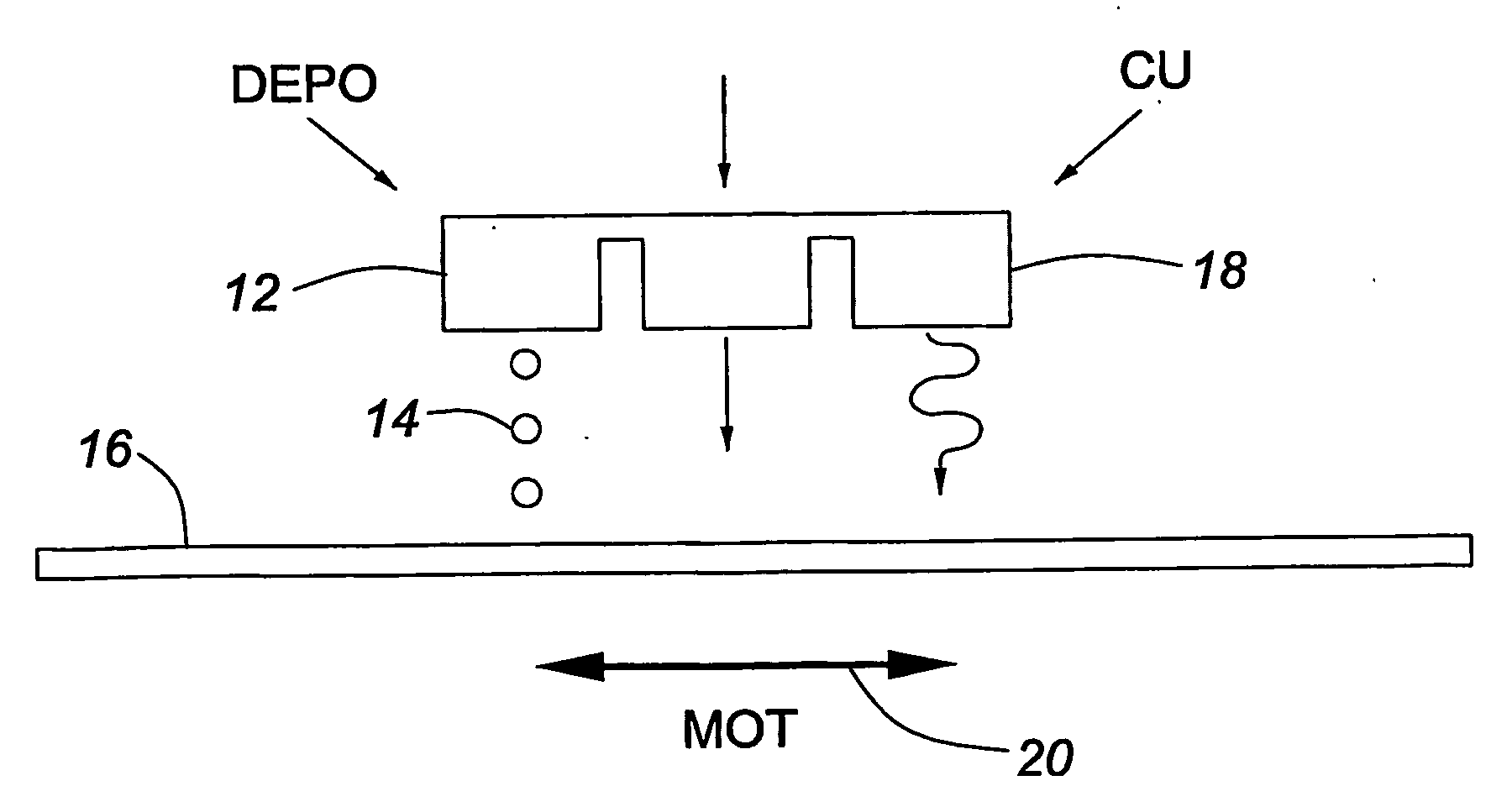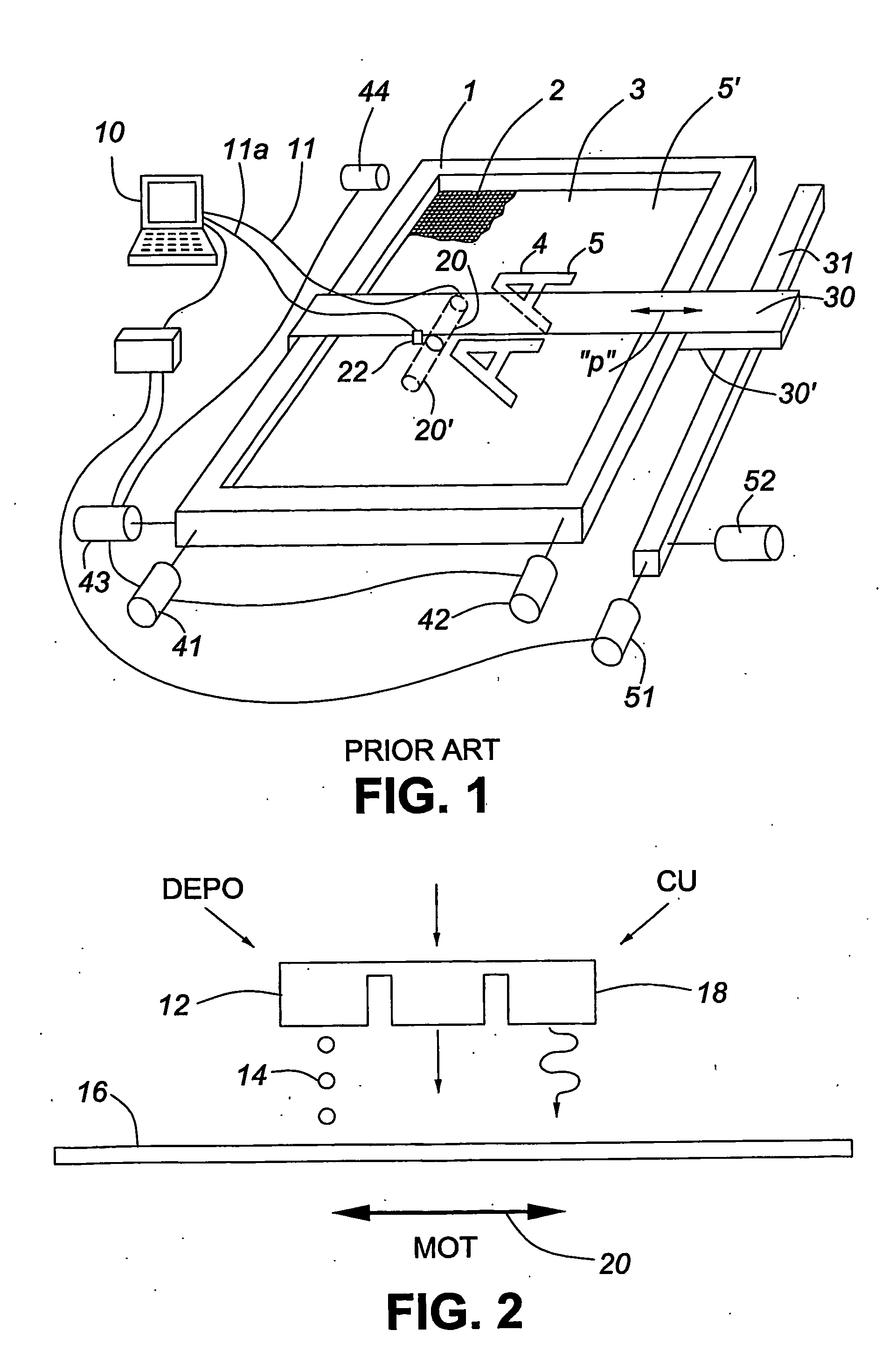Method of producing an image on a printing screen
a printing screen and image technology, applied in the field of computer to screen (cts) imaging system, can solve the problems of reducing the exposure rate of both methods, and re-deposition of debris, so as to achieve rapid and economical production of high-resolution stencils, improve image definition, and improve the effect of image definition
- Summary
- Abstract
- Description
- Claims
- Application Information
AI Technical Summary
Benefits of technology
Problems solved by technology
Method used
Image
Examples
Embodiment Construction
[0029]FIG. 1 illustrates a prior art method as described in aforementioned U.S. Pat. No. 5,875,712 in which an inkjet printer is used to deposit light blocking material onto an emulsion coated screen where the material prevents light from reaching the screen so that the unexposed emulsion underneath the blocking material can be washed away.
[0030] The present invention makes use of inlet printing technology in a computer to screen (CTS) imaging system. It is well known that digital imaging techniques can be used to store, in a computer, digital images of patterns which are to be reproduced on a silk screen or a lithography plate for generating a screen or plate. The concept is analogous to the production of a printed image on a sheet of paper wherein “ink” is ejected onto the paper as a reproduction of the image stored in the computer. In the present invention this technology is extended to depositing patterns onto a silk screen or lithographic plate using various techniques. In one...
PUM
| Property | Measurement | Unit |
|---|---|---|
| size | aaaaa | aaaaa |
| particle size | aaaaa | aaaaa |
| particulate sizes | aaaaa | aaaaa |
Abstract
Description
Claims
Application Information
 Login to View More
Login to View More - R&D
- Intellectual Property
- Life Sciences
- Materials
- Tech Scout
- Unparalleled Data Quality
- Higher Quality Content
- 60% Fewer Hallucinations
Browse by: Latest US Patents, China's latest patents, Technical Efficacy Thesaurus, Application Domain, Technology Topic, Popular Technical Reports.
© 2025 PatSnap. All rights reserved.Legal|Privacy policy|Modern Slavery Act Transparency Statement|Sitemap|About US| Contact US: help@patsnap.com


